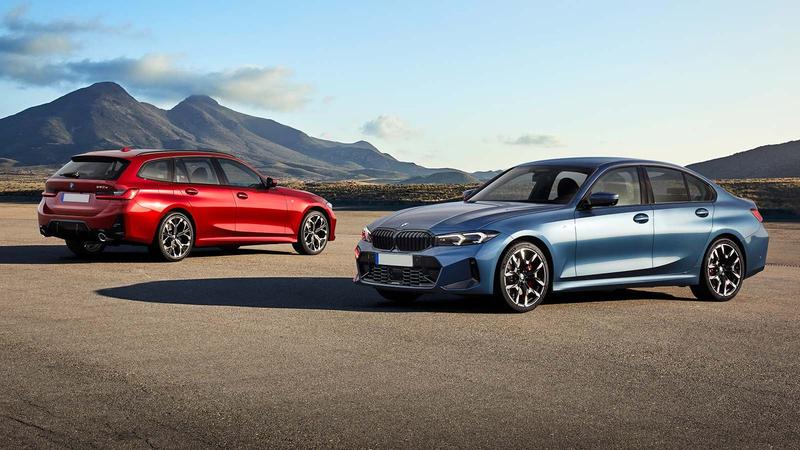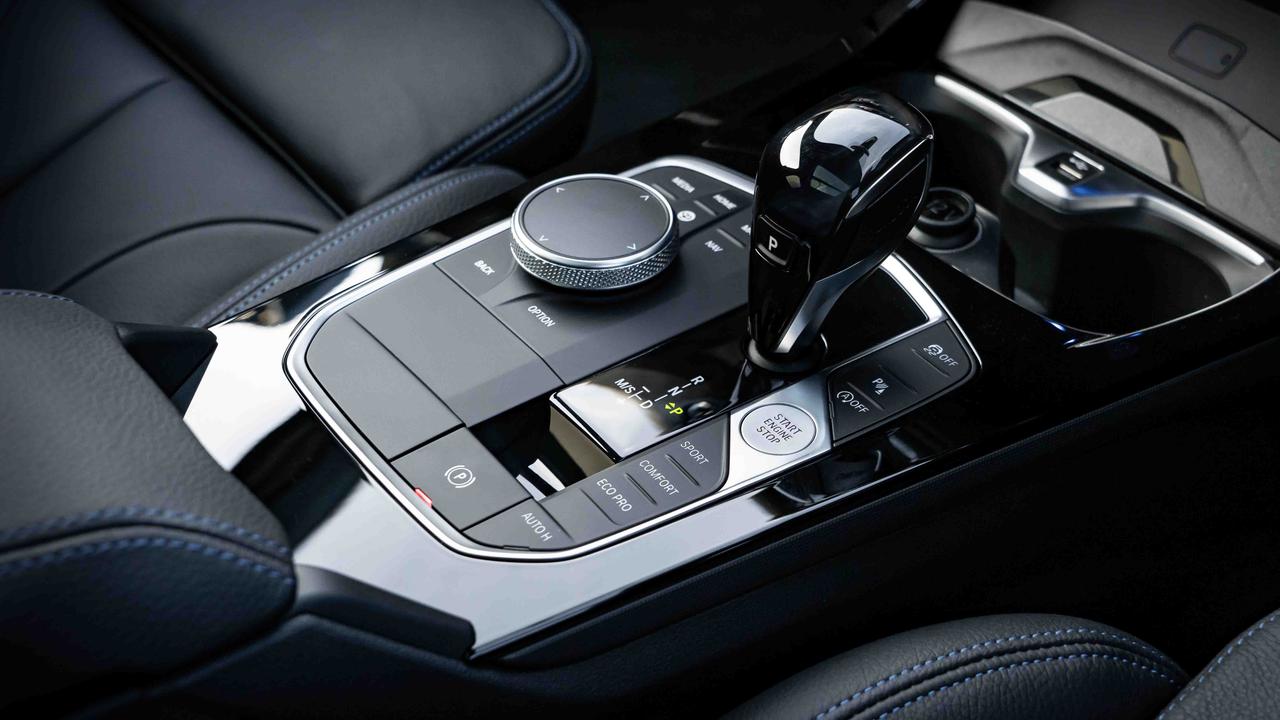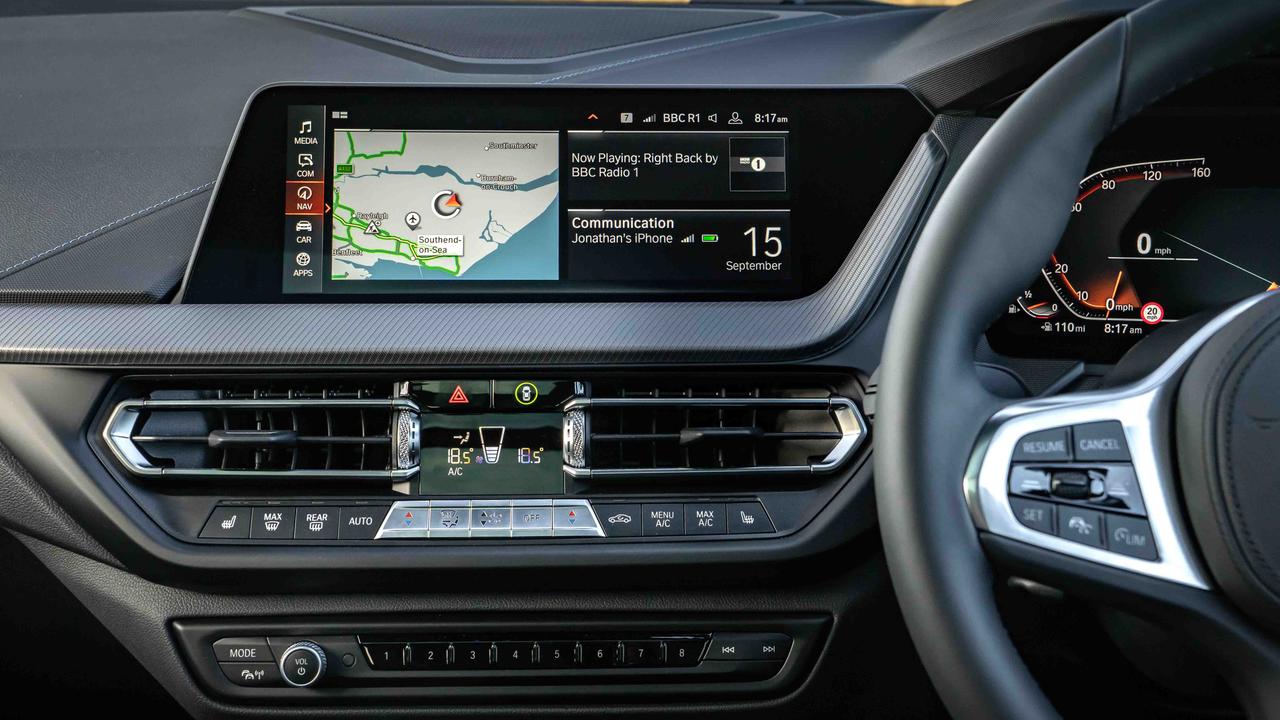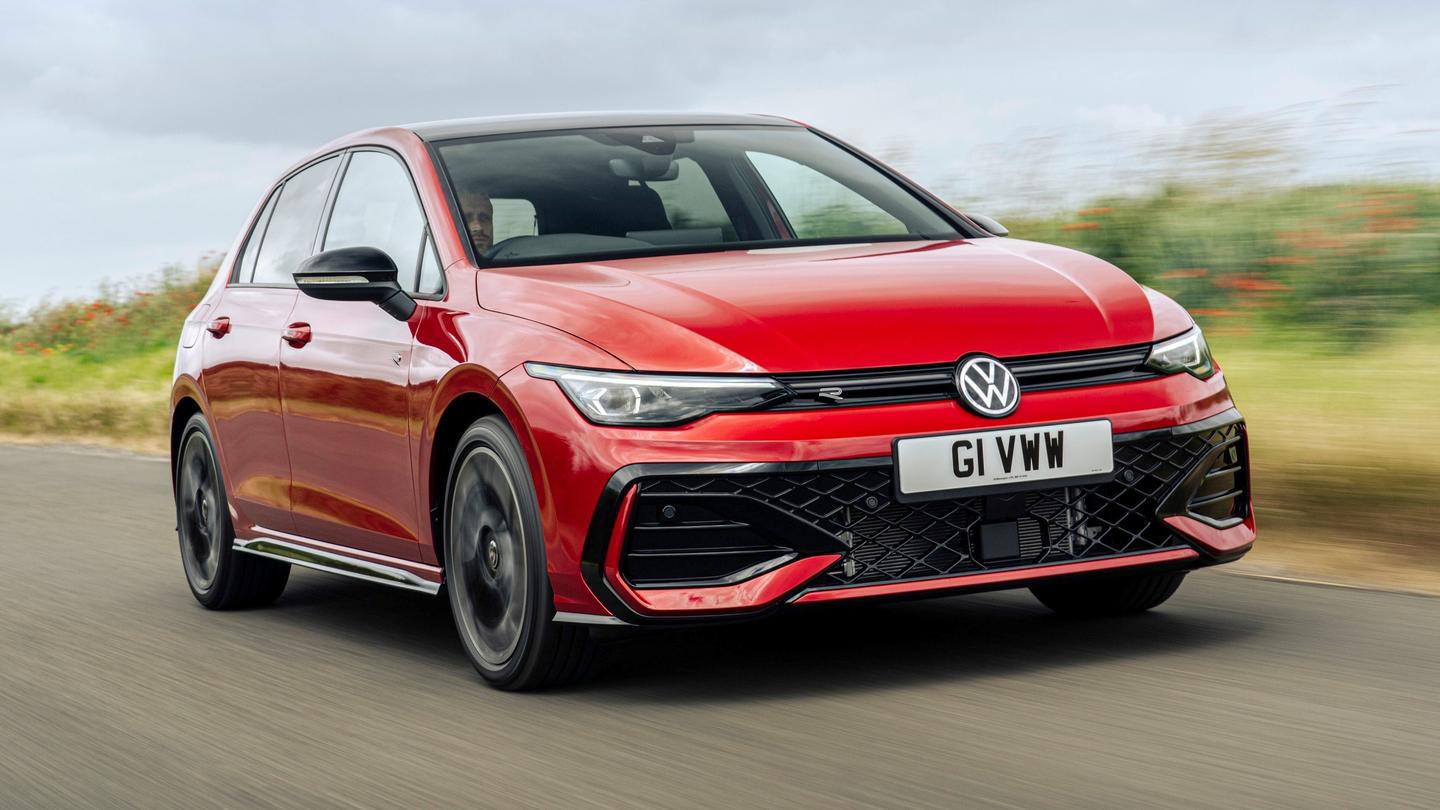
BMW 1 Series interior, tech and practicality
Gallery
Comfort and visibility
Broadly speaking, the 1 Series’ cabin is comfortable. There’s plenty of adjustment in the seat and steering wheel to get comfortable and, once you’re in place, you’ll find many of the controls are very subtly pointed towards you, for a cockpit-like experience. BMW includes adjustable under-thigh support on its front seats, which makes it a little easier for passengers with very long legs to find a comfortable position.
Even on the updated 1 Series, the dashboard is simple – but maybe too simple. It's a huge shame BMW has removed physical knobs and buttons for the climate control functions in the 2025 facelift. You can always adjust the temperature using virtual buttons at the bottom of the car's central touchscreen, but they're not as easy to find without looking as regular knobs.
Front and side visibility is on par with other cars in this class. You get a good view out thanks to fairly slim front pillars and you won’t find yourself craning your neck to see around awkward T-junctions. Over-the-shoulder visibility, like so many rivals, is mediocre thanks to thick rear pillars, but this is somewhat mitigated by the fact all versions get front and rear parking sensors as standard.
Standard equipment
Until recently, the 1 Series range opened with SE trim – although it’s never been the most popular trim level. Still, this gets a host of key features including climate control, cruise control, automatic lights and wipers, and all-round parking sensors. The standard infotainment system includes DAB radio, Bluetooth, Apple CarPlay and Android Auto. You also get automatic emergency braking and lane-departure warning. This trim includes pretty much everything you need so the higher-end versions mainly bring visual upgrades.
The 1 Series range for the updated 2025 model begins with Sport trim. This gives you LED headlights and rear lights, 17-inch alloy wheels and gloss black styling details on the bumpers while, inside, there's heated seats, the twin-screen curved display, single-zone air-conditioning and the sports steering wheel. You also get a reversing camera and cruise control.

M Sport echoes the look of BMW’s full-fat M performance cars without the high price or fuel consumption, and its continued popularity helps keep payments affordable on a PCP finance deal. You get 18-inch alloy wheels and an aggressive M Sport body kit featuring more dark-coloured styling elements, as well as tinted rear windows. Inside you get BMW's sports seats.
In the pre-facelift line-up you'll find the fast, front-wheel-drive 128ti, which gets unique alloy wheels, red accents and a special body kit to stand out from the rest. Inside, there’s unique stitching on the leather surfaces to lift them above standard M Sport versions. This model has been discontinued from 2024, so now is the perfect time to buy a nearly new 128ti that still feels like it just rolled off the factory floor.
At the top of the pre-facelift range, M135i cars get a unique body kit and wheels to match their red-eyed performance levels. You also get uprated suspension and brakes to cope with the extra forces this car can generate. All M135i cars get the upgraded 10.25-inch infotainment screen – even prior to the 2022 model year, when it was still an option on lesser 1 Series cars.
Infotainment and audio
The infotainment system in the 2025 facelift of the BMW 1 Series consists of two 10-inch displays – a touch-sensitive one in the middle of the car and another as a driver's display. The screens are sharp and responsive, and there's built-in wireless Apple CarPlay and Android Auto support. You don't get a physical iDrive controller on the centre console to control either screen, so you're left having to touch the screen to flick between menus. It's a bit of a disappointment, but the screens do look more modern than those in the pre-facelift cars.
Speaking of the pre-facelift 1 Series, before 2022, the standard iDrive infotainment screen on 1 Series cars was an 8.8-inch display. Compared to a typical tablet computer, this screen is short and wide and, while it looks nice, information does tend to get crushed together on screen if you’re using the sat nav at the same time as the audio. The sat nav’s coloured routes can be a little confusing to follow, too.
The larger 10.25-inch screen was part of the Tech Pack II offered on 1 Series cars before 2022 and became standard across the range after that point. This screen is much easier to read, with the majority of the extra space being devoted to screen height – that means there’s more space for graphics and what’s on screen is easier to read at a glance.

Both versions are based around a touchscreen and respond quickly to inputs. However, we have to award BMW extra marks for retaining the rotary controller on the centre console. This makes it easy for the driver to navigate around menus without taking their eyes off the road like they’d have to in a touchscreen-only setup.
There’s just the one standard stereo across the range. It’s nothing special but you’re unlikely to be upset by the sound quality unless you’re a true audiophile. If that’s the case, consider upgrading to the optional Harman/Kardon stereo, which has a much more balanced sound.
Rear seat space
The back seats are a lot more spacious than previous 1 Series models, but it’s still a little bit cramped compared to an Audi A3 or Volkswagen Golf. A tall adult will struggle to sit comfortably behind another tall adult, but two average-sized adults will have enough space. Rear headroom could also be better, especially on cars with the optional sunroof, so taller adults might have to slouch to avoid bumping their heads.
You’ll find Isofix mounts on the two rear-outer seats, but cars like the BMW X1 and Mercedes GLA make better baby-carrying vehicles. These SUVs are larger and higher off the ground – the 1 Series’ lower hatchback body style means you have to bend down quite far to reach the rear seats.
Boot space
Before the 2025 facelift, the boot in the BMW 1 Series was 380 litres, which is almost exactly on par with the cargo area in the Audi A3 and larger on paper than the A-Class. However, in practice, the BMW’s boot feels a little less spacious because of the higher floor level. Loading items, at least, is easy thanks to the wide boot opening with minimal intrusion from the brake light units.
However, the boot in the facelift 120 model shrinks to just 300 litres due to a battery pack under the boot floor. The four-wheel-drive M135i model still gets the full 380 litres.






























































